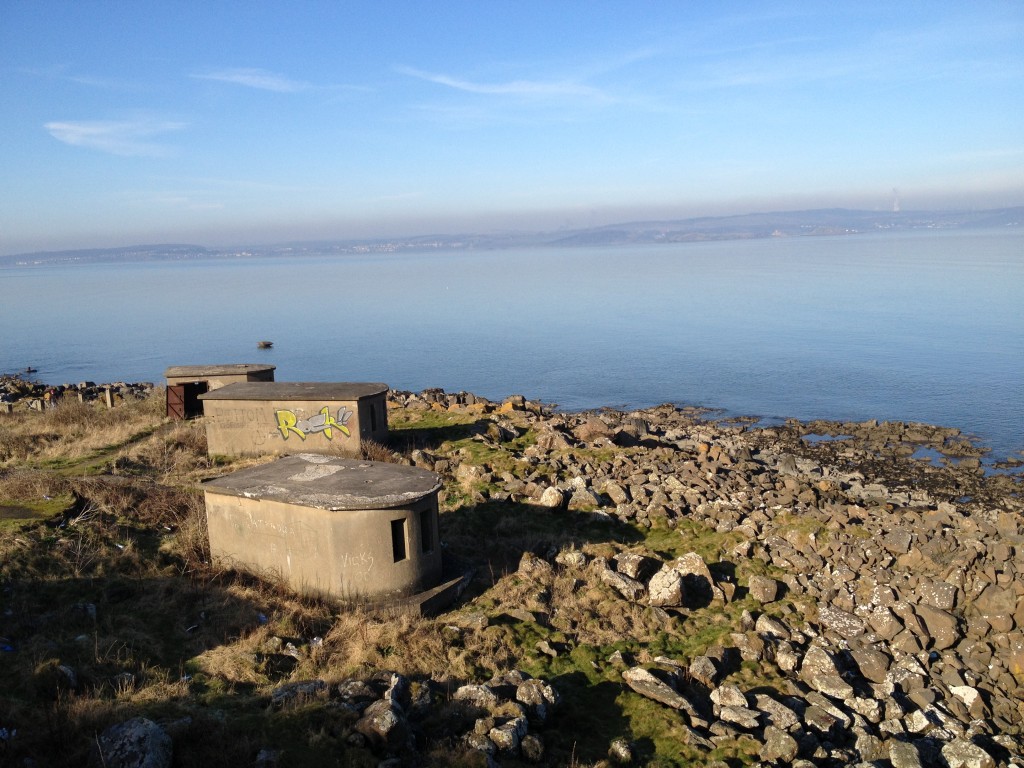It’s fair to say that, growing up in the western suburbs of Edinburgh, I didn’t have much experience of Scotland’s numerous islands. The nearest thing was located about a mile off the southern shore of the Firth of Forth by the picturesque Edinburgh village of Cramond. This somewhat tumbledown island still has a certain appeal, not least because it must rank among the easiest in the country to reach; at low tide, you can actually walk there.
This very accessibility, however, can trick unwary visitors. During 2012, more than one third—25 out of 66—‘shouts’ (call outs) answered by the RNLI station at South Queensferry involved Cramond Island. One particularly newsworthy example was just last December, when a dozen people—including several children—had to be pulled rescued from the freezing water.
As a child, the hint of “risk” associated with Cramond Island—that, when visiting it, you had to be mindful of the time—was one of its most fascinating features; that, and the pervading air of abandonment which made it a young explorer’s delight. The fact that it was at the end of an ordinary bus journey simply added to the appeal.
ABANDONED
On my most recent visit—a fine sunny day with barely a gasp of wind—I was reminded how there are few places more relaxing on the Firth of Forth than Cramond Island, especially when looking west towards the distinctive silhouettes of the Bridges. Don’t be fooled, though; there are few spots truly sheltered from the Firth’s more tempestuous moments, which helps explain how little of centuries of human habitation appears to have ‘stuck’ to the island.
‘Abandoned’ is an apt word; it’s not just that recent water damage shows how the concrete ‘causeway’ from Cramond (which is shadowed by an old anti-boat barrier) actually covers a storm water overflow for the main Edinburgh sewage system. As you approach the island’s most southerly tip, you see that the Knoll is crowned by the weathered, abandoned shell of a building; this once housed a 75mm gun and associated searchlight emplacement.
These and numerous other military buildings, built by the British Army back in 1941, are today the most visible signs of past human habitation on the island. Ironically enough, during their construction, soldiers uncovered a prehistoric cist burial chamber, suggesting people had been living on the island even before the establishment of Roman settlement in Cramond. Unfortunately, given the obvious distraction of the Second World War, the location of the cist wasn’t recorded and has long been lost.
ISLAND FORTRESS
The empty, concrete husks of gun emplacements, searchlight mounts, barracks and engine rooms are chiefly located on the island’s north eastern corner, facing downstream towards the North Sea. Today, their walls are covered by grafitti, their floors and paths littered with old cans, broken glass and the burnt-out remnants of camp fires. There’s a sense that the island’s visitors have been left to their own devices.
Even the Army’s foothold on the island proved shorter and less effective than originally expected. Considering all the construction carried out in the early months of the Second World War, the perceived threat posed by German forces to the Royal Naval dockyard upstream at Roysth was soon downgraded, leading to Cramond Island being placed on a ‘care and maintenance’ basis as early as 1943. Many of the armaments hastily installed on the island were almost as speedily moved elsewhere.
In fact, the only notable action seen by the army unit stationed on the island during the entirety of the conflict was a military exercise in 1941 in which, to the clear embarrassment of officials, determined members of ‘A’ Company Home Guard—based at nearby Lauriston Castle—successfully stormed and captured the garrison, after one local member of the platoon spent a full day undetected on the island, gathering ‘intelligence’ on the army’s installations and routines.
FARMING
While the island remained in military hands until the late 1950s, by 1954 the actual deployment had been reduced to just two men, encouraging an Edinburgh house-painter called James Hunter to consider restoring and living in one of the old farm buildings on the island. Sadly, repeated acts of vandalism, culminating with the building being set on fire, forced him to abandon the project. Today, the remaining ruins are almost completely submerged beneath brambles, bracken and trees.
Given its exposed position in the Firth of Forth, agriculture was never likely to be a particularly profitable occupation, although late 18th century experiments by the pioneering agriculturalist Lord Rosebery (the then owner of the Dalmeny Estate, to which Cramond Island still belongs) included the temporary establishment of a flock of Shetland sheep on the island, which contributed to the breed’s eventual introduction across the Scottish Highlands. That said, in the late 17th century, at least one occupant of the island also provided “asylum for unfortunate females whose situation required a temporary retirement”—if the local Kirk Session records are to be believed!
By the early 20th century, these farm buildings—as well as the tiny ‘Duck House’ built on the north west corner of the island, originally as shelter for shooting parties from the Dalmeny Estate—were used solely as holiday accommodation. The last recorded agriculture on the island—small trial plots for potatoes, maintained by the East of Scotland College of Agriculture into the 1930s—have long been lost under bracken.
Today, if you time it correctly—official safe crossing times (within two hours either side of low tide) are posted on a notice board at the start of the ‘causeway’—Cramond Island can offer an escape from the hurly-burly of modern life. Given it’s less than 10 miles from the centre of one of Scotland’s largest cities, it’s perhaps surprising that it isn’t a more popular visitor attraction. Still, given how busy the South Queensferry RNLI station already is, perhaps that’s just as well!
Further information:
The Cramond Association/Cramond Heritage Trust
0131 339 3829
www.cramondheritagetrust.org.uk
First published by Scottish Islands Explorer: May/June 2013.
